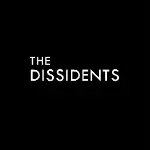
The Beast within Adaptation
Since the dawn of cinema at the turn of the 20th century, film has maintained a close and nuanced relationship with literature. For over a century, audiences have appreciated countless film adaptations and films inspired by novels, witnessing how the new medium continuously reinterprets, deconstructs, or challenges its classical predecessors. In this post-Resnais and post-Godard era where filmmakers have, to some extent, achieved the complete atomization of texts within films—how can we approach adaptations? Perhaps the real question is whether audiences can still maintain their focus and curiosity towards film adaptations, which relates to how cinema addresses the relationship between the past and the future.
From the perspective of ordinary audiences, film adaptations can be roughly divided into three main types. The first type is the most commercially viable - IP-based adaptations. Beginning with Disney's fairy tale movies and continued through franchises like Harry Potter, The Lord of the Rings, Twilight, ,this trend eventually expanded into the adult market, until the Marvel Universe, a variant of this adaptation, sparked a global superhero craze. This adaptation strategy is essentially about building a theme park centred around a particular the setting, feeding the audience with sophisticated and impactful sensory experiences and fantasies designed for consumption. However, needless to say, this method of adaptation is like a fleeting gold rush. Apart from immediate, collective dopamine rush, we get nothing else from it; the seemingly ambitious "universe" maps created by large enterprises are simply the most conservative and unoriginal speculative ventures.


The second category is classical, dramatic adaptation. This type of adaptation has deep roots in the history of drama. From ancient Greek amphitheaters to European stage theaters, the experience of drama has significantly influenced film. Filmmakers delve into the adapted text, integrating characters and scenes, analysing plot tensions and moral themes, and ultimately striving to restore these elements through visual means. It is in this process that filmmakers learn to "transplant" ideas, much like skilled novelists and playwrights. Just as writers often adeptly weave the ethical conflicts of Oedipus or Hamlet into diverse narratives, filmmakers often transplant the original character relationships and key plots, or just some iconic elements, into new contexts and settings. Through evolving this operation, film adaptation has gradually pushed back against traditional "dramatization". When Bresson adapted Leo Tolstoy's The Forged Coupon in France in the 1980s, the focus is no longer on the ironic chain reaction, but on the emotions conveyed through the hands, the texture of the faces, and the coldness of the system. This allows audiences to can break free from the constraints of the original text, obtain sensory information, and seek deeper insights within the imagery. Such benefits arise from the unique nature and power of the film medium.
To this day, the charm of this type of adaptation continues to influence both movies and cinephiles; they are definitely not without merit, but for the Gen Z audiences, these adaptations probably seem increasingly "boring", for audiences today are almost pathological in their pursuit of "fashion". As a result, filmmakers have shifted from the traditional craft of "transplantation" to a more contemporary, postmodern approach known as "proliferation", which is the third category. Unlike classical composers who worked around specific motives, 21st-century filmmakers are like DJs, sampling and remixing in a wild and unrestrained way.They break up and reorganise texts, creating many gaps and an endless arra of images in them. This strategy of adaptation can also be traced back to decades ago – seen in Calvino's crazy and fascinating continuation of original texts, and Resnais' presentation of time, space and memory through chaotic and radical montages. The future seems to affirm Duras' prophecy, where text and linear storytelling would become obsolete, whilst cinematic expressions that convey emotions and experiences in innovative ways will be on the rise.
Against the backdrop of this trend, in 2023, two films adapted from the same novel, Henry James' The Beast in the Jungle, appeared in two bizarre manner: Patric Chiha's La Bête Dans La Jungle and Bertrand Bonello's La Bête. These two projects, originally starring the same actor, simultaneously reinterpreted and expanded upon the novel. Interestingly, the complex journey of how the novel came about enhances the significance of the adaptations. The imagery of the beast in the jungle was inspired by a series of paintings by the French painter Henri Rousseau. Influenced by these works, Henry James created a novel based on his own failed relationship. Since its publication, the novel has been adapted into films in various forms, but it’s not until a century later that these two movies rediscovered its magic in a unique way.

Chiha's adaptation highlights a more obvious "transplantation" element by placing the lifelong bond between the protagonists John and May in a French nightclub from the late 20th century to the early 21st century, largely retaining the original plot direction and metaphors. What gives the film an unusual charm is the peculiar surreal effect of the film medium. Filmmakers treat the tumultuous historical backdrop as ambient noise, almost entirely confining the audience's vision to the windowless nightclub, where the social upheaval is manifested through the scenery, music, and dancing crowds. In contrast to the changing elements of the era and the youthful faces around them, John and May remain physically unchanged throughout their 25 years of waiting. This blurring of the timelines allows the physical time and space to intersect and transform. The space becomes fluid, influenced by the visible traces of history,. Major events such as government changes, shifts in world politics, and the AIDS crisis are introduced. The brand-new experiences, emotions, and subcultures of humanity reflect a more concrete reality beyond the original text. The long wait shared by John and May crystallises into a universal gesture, with May's hand on the banister as she climbs the stairs resembling a marble limb that brushes away the capricious surface of time, allowing all the fearful people over the past century to find their own reflection in it. The nightclub has thus transformed into the weird room in Twin Peaks, which the audience revisits repeatedly like agent Cooper did, reconnecting with the eternal image of the beast from each era. The sense of eternity present in this creative theme becomes possible because of these evocative images.

If Chiha merely adds an additional layer to the text, then Bonello’s multiple adaptations in La Bête goes much further, effectively breaking the original text apart and reassembling it in complex ways. He uses two reincarnated characters to intertwine human experience across history, present and future. The mystique surrounding those invisible aspects found in the gaps between the visible elements of the story fascinate us even more. Bonello uses different cinematographic styles in each story and embeds fragments of different forms and media, such as paintings, online videos, TV programs, pop-up ads, surveillance pictures and so forth, playfully destroying or re-editing them. His ambition is evident from the film’s outset - Léa Seydoux follows instructions and performs without props in front of a green screen, reminding the audience of the artificiality of all following images. On the one hand, this destruction of the audience's trust reconsiders and exposes the traditional logic of fictional narratives, prompting the audience to question adaptations, original novels and even universal emotions and experiences. On the other hand, the film, in its own form, provides a modern interpretation of the imagery of the beast - the fear of fading love in a technologically advanced society. Just like the legends surrounding the "beast" for more than a century, everything changes, but only the fear remains constant. Humans will never know when and how the catastrophe will strike and ultimately determine their fate, and they can only affirm their existence through that fear.

Finally, I would like to point out that Bonello displays more nuance than Chiha by swapping the genders of the two protagonists in the novel, a move that reflects the evolution of feminist thought in the past century, highlighting how women undoubtedly face a broader range of fears and challenges as compared to men in modern societies. Bonello is acutely aware of the inherent and indelible politics involved in adaptation. As filmmakers reinterpret old texts in a new context, they must choose whether to summon the dead spirits or revolutionize them. With a strong belief in the potential of film, I hope that filmmakers will always choose the latter - only through innovation can we truly preserve the essence of classic texts.
wirtten by ANNI
THE DISSIDENTS are a collective of cinephiles dedicated to articulate our perspectives on cinema through writing and other means. We believe that the assessments of films should be determined by individuals instead of academic institutions. We prioritize powerful statements over impartial viewpoints, and the responsibility to criticize over the right to praise. We do not acknowledge the hierarchy between appreciators and creators or between enthusiasts and insiders. We must define and defend our own cinema. |









Share your thoughts!
Be the first to start the conversation.